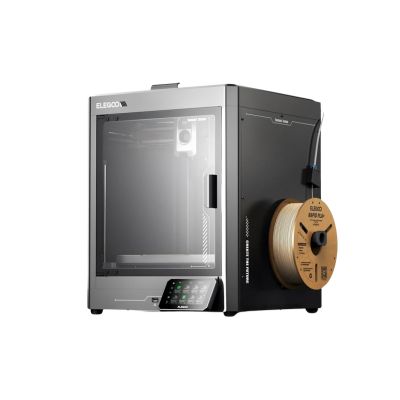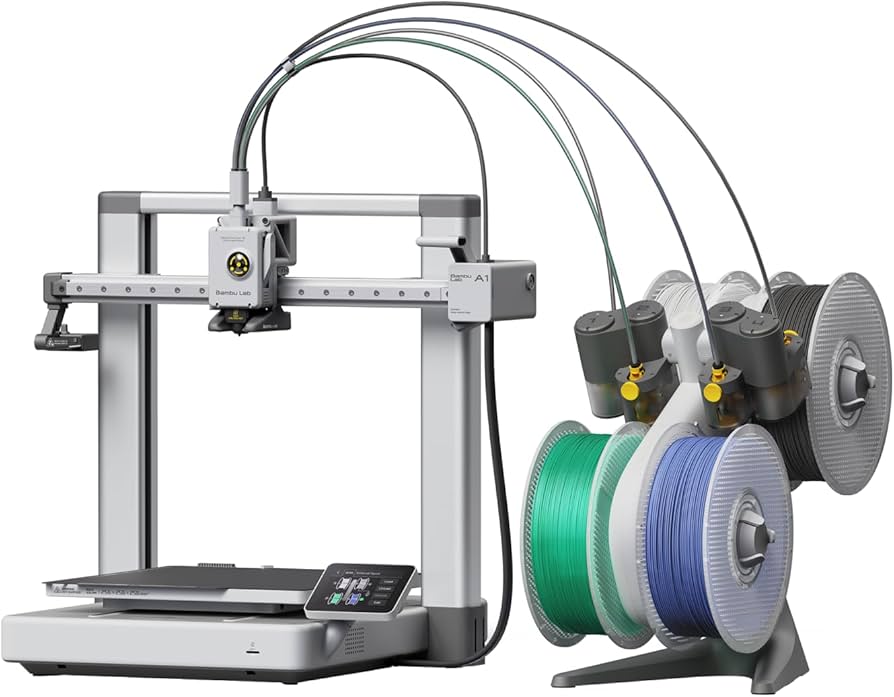Compare Centauri Carbon vs A1
Comparison between the best 3D printers
Choose the best 3D printer at the best price. The cheapest 3D printers are here.
Buy a 3D printer here with 3D Fila.
 |
 |
|
| Model | Centauri Carbon |
A1[BUY A1] |
| Printing Material | Filament | Filament |
| Buy Filament for Elegoo Centauri Carbon | Buy Filament forBambu Lab A1 | |
| Estimated price | $500,00 | $700,00 |
| Manufacturer | Elegoo | Bambu Lab |
| Release Year | 2025 | 2023 |
| Print Volume [mm] | 256x256x256 | 256x256x256 |
| Printer Size [mm] | 500x500x600 | 385x410x430 |
| Weight [kg] | 17,5 | 8,3 |
| Power Loss Recovery | YES | YES |
| Enclosed printer | YES | NO |
| Bed Leveling | Automatic | Automatic |
| Filament End Sensor | YES | YES |
| Bed type | Heated | Heated |
| Power supply system | Direct Drive | Direct Drive |
| Standard nozzle | 0,4 | 0,4 |
| Maximum Nozzle Temperature [°C] | 300 | 300 |
| Maximum Bed Temperature [°C] | 110 | 100 |
| Maximum printing speed [mm/s] | 500 | 500 |
| Filament holder | YES | YES |
| Camera for supervision | YES | YES |
| Recommended filaments | PLA, PETG, ABS, ASA, TPU, NYLON, CARBON FIBER | PLA, PETG, TPU, PVA |
| Recommended slicers | Elegoo Slicer, Orca Slicer | SuperSlicer, PrusaSlicer, Cura, OrcaSlicer |
| Maximum Resolution [mm] | 0,1 | 0,1 |
| Processor | ||
| Display | Touchscreen 4,3'' | Touchscreen 3,5 |
| Power Supply | 350 W | 350 W |
| Connectivity | WiFi, SD, USB | Wi-Fi, Bambu-Bus, Cartão Micro SD |
| Operating systems | Windows, Linux e Macbook | Windows, Linux, Macbook |
| Date of registration in the system | 2025-02-10 | 2024-07-17 |
| Release date | 2025 | 2023 |
| Extra features | The Elegoo Centauri Carbon is a CoreXY 3D printer with an enclosed structure, direct drive extruder, and hardened steel components for abrasive materials. It features automatic bed leveling, a touchscreen, a filament cutting system, and an elongated nozzle designed to reduce clogs. It offers Wi-Fi connectivity for remote file transfer and runs on a Klipper-based firmware, providing advanced control and precise adjustments. | The BambuLab A1 printer features fully automatic calibration, multi-color printing with the AMS system, active flow rate compensation, quick nozzle change with a clip, active motor noise cancellation, a build volume of 256x256x256 mm³, a maximum extruder temperature of 300°C, and a heated bed of up to 100°C. In addition, it has high precision, a machine health management system and an intuitive 3.5-inch touchscreen interface. |
| Support for multiple colors and materials (AMS and CFS) | NO | YES |
Notes * |
||
| Cost-benefit | 8 / 10 | 7 / 10 |
| Hardware | 6 / 10 | 4.8 / 10 |
| Tela | . | . |
| Print volume | 4 / 10 | 4 / 10 |
| Performance | 4 / 10 | 4 / 10 |
| [BUY A1] |
Conclusion |
| In conclusion, when comparing the Elegoo Centauri Carbon and the Bambu Lab A1 3D printers, both models exhibit valuable features that cater to different user needs and preferences. The Centauri Carbon stands out with a larger print volume and an enclosed design, making it suitable for a wider range of materials, particularly for users interested in advanced filaments such as carbon fiber and nylon. Its price point offers a strong cost-benefit ratio, providing significant capabilities at a lower investment. On the other hand, the Bambu Lab A1, while slightly more expensive, offers modern features such as full-color printing support and advanced calibration systems. Its lightweight design and compact size are advantageous for users with limited space, though its print volume is smaller than that of the Centauri Carbon. Ultimately, the choice between these two printers will depend on individual priorities: if a larger print volume and a robust build for diverse materials are critical, the Elegoo Centauri Carbon would be the better option. Conversely, for users seeking streamlined features and multi-material capabilities, the Bambu Lab A1 presents a compelling alternative. Both printers are well-suited to their respective niches in the 3D printing market. |

